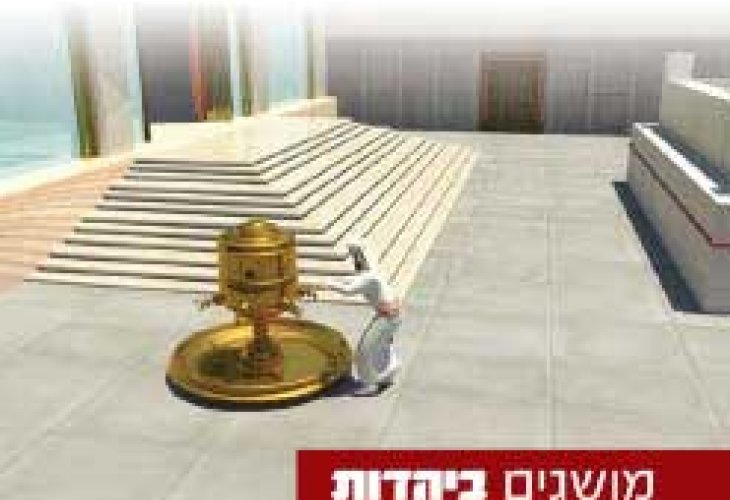The Basin
The basin served as a sacred tool for consecrating the priests for temple service.

The basin was a large copper receptacle in the Temple that always contained water for the priests to sanctify their hands and feet for their service in the Temple and for other needs in the Temple done with the basin's water.
Purpose of the Basin
Among the needs for the priests' service in the Tabernacle, the Torah commands the making of a basin: "And you shall make a copper basin and its stand of copper for washing" (Exodus 30:18), which is a type of large cauldron with faucets at its mouth to pour out water. It rests on its stand—a fixed base for the basin, having an interior made like an open box. Likewise, when anointing the Tabernacle and its vessels with the anointing oil, it was said: "And you shall anoint the Tent of Meeting, etc., and the basin and its stand" (Exodus 30:26-28).
The basin is deemed a service vessel. According to some early sages, who hold that making the Temple vessels is part of the commandment "Make Me a sanctuary" (Exodus 25:8), the making of the basin and its stand is included in this commandment. According to those who believe that making the vessels is only "a preparatory act for mitzvot"—and they are "sacred auxiliaries," the making of the basin is not a (specific) commandment, rather Hashem ordered us to make it for the sanctification of hands and feet.
Sanctification of Hands and Feet
The basin was made for the sanctification of the priests' hands and feet with its water for the service of the Tabernacle and the Temple, as it was stated: "And you shall make a copper basin and its stand of copper for washing... and you shall put water in it, and Aaron and his sons shall wash from it their hands and their feet when they come to the Tent of Meeting, etc." (Exodus 30:18-20). Also, all service vessels are sanctified from it, as it was stated: "And they shall wash from it, etc., and when they approach the altar, they shall wash" (Exodus 40:31-32);
It was said about the basin in the Temple that initially, it had only two spouts (faucets). Ben-Katin, who was a High Priest, made twelve spouts for the basin so that the twelve priests engaged in the daily offering would sanctify their hands and feet simultaneously—to avoid disputes where each would say "I will be the first to sanctify."
The Tannaim debated about the qualifying water for the basin for sanctifying hands and feet: Rabbi Yishmael says spring water—living water specifically; the sages hold that even mikveh water is qualified for sanctifying hands and feet. Also, any water qualified to complete the mikveh measure (40 seah) completes the measure of "four priests' worth" for the basin's water.
The water in the basin becomes disqualified by overnight stay, as the basin was anointed with the anointing oil and is deemed a service vessel. Therefore, Ben-Katin made a "muvkin"—a wheel to immerse the basin into a pit in the evening, to reconnect its water with the basin's water and nullify their overnight stay. Some explained "muvkin" as a vessel surrounding the basin, in which water was always present, and it was a secular vessel, so its water wasn't disqualified by overnight stay, and the water flowed from the muvkin to the basin.

